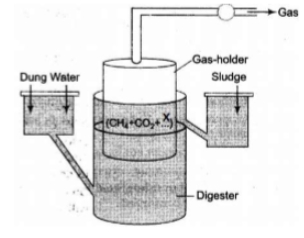Identify the incrrectly matched pair:
1. Trichoderma harzianum - Biocontrol
2. Aspergillus niger - source of citric acid
3. Baculovirus - narrow spectrum species specific insecticides
4. Monascus purpureus - source of cholesterol synthesizing enzyme
Identify the incorrectly matched pair
|
1. |
Baculoviruses |
Species specific, broad spectrum insecticides |
|
2. |
Trichoderma |
Free living fungi common in root ecosystems |
|
3. |
Ladybird |
Biocontrol of aphids |
|
4. |
Organic farming |
Pests kept at manageable levels rather than completely eradicated |
Identify the incorrect matched pair:
1. Trichoderma harzianum: Cyclosporin A
2. Monascus purpureus: Statins
3. Aspergillus niger: Citric acid
4. Streptococcus pyogenes: Clot buster
Identify the incorrectly matched pair:
|
1 |
Streptococcus |
Clot buster |
|
2. |
Monascus purpureus |
Statins |
|
3. |
Trichoderma harziamum |
Immunosuppressant |
|
4. |
Aspergillus niger |
Citric acid |
Baculoviruses are:
1. Species specific, narrow spectrum insecticides
2. Species specific, broad spectrum insecticides
3. Non specific, narrow spectrum inseticides
4. Non specific, broad spectrum insecticides
Gases found in biogas are:
1. Carbon dioxide is the only gas
2. Methane is the only gas
3. Carbon dioxide, hydrogen sulphide and Methane
4. Carbon dioxide, hydrogen cyanide and Methane
In the given diagram the gas X can be :

1. Hydrogen
2. Carbon monoxide
3. Ammonia
4. Oxygen
The virus shown here is a causative agent of :
1. Intestinal infections
2. Respiratory infections
3. CNS infections
4. Genito-urinary infections
Consider the following statements:
| I: | Statins, used as blood cholesterol-lowering agents, are derived from Monascus purpureus |
| II: | Cyclosporin A, derived from Trichoderma, is used as an immunosuppressant |
| III: | Baculoviruses, in the genus Nucleopolyhederovirus, are species-specific, broad-spectrum insecticides |
Which of the above statements are true?
1. I and II only
2. I and III only
3. II and III only
4. I, II and III
Modern detergents contain enzyme preparations of
(1) acidophiles
(2) alkaliphiles
(3) thermoacidophiles
(4) thermophiles



